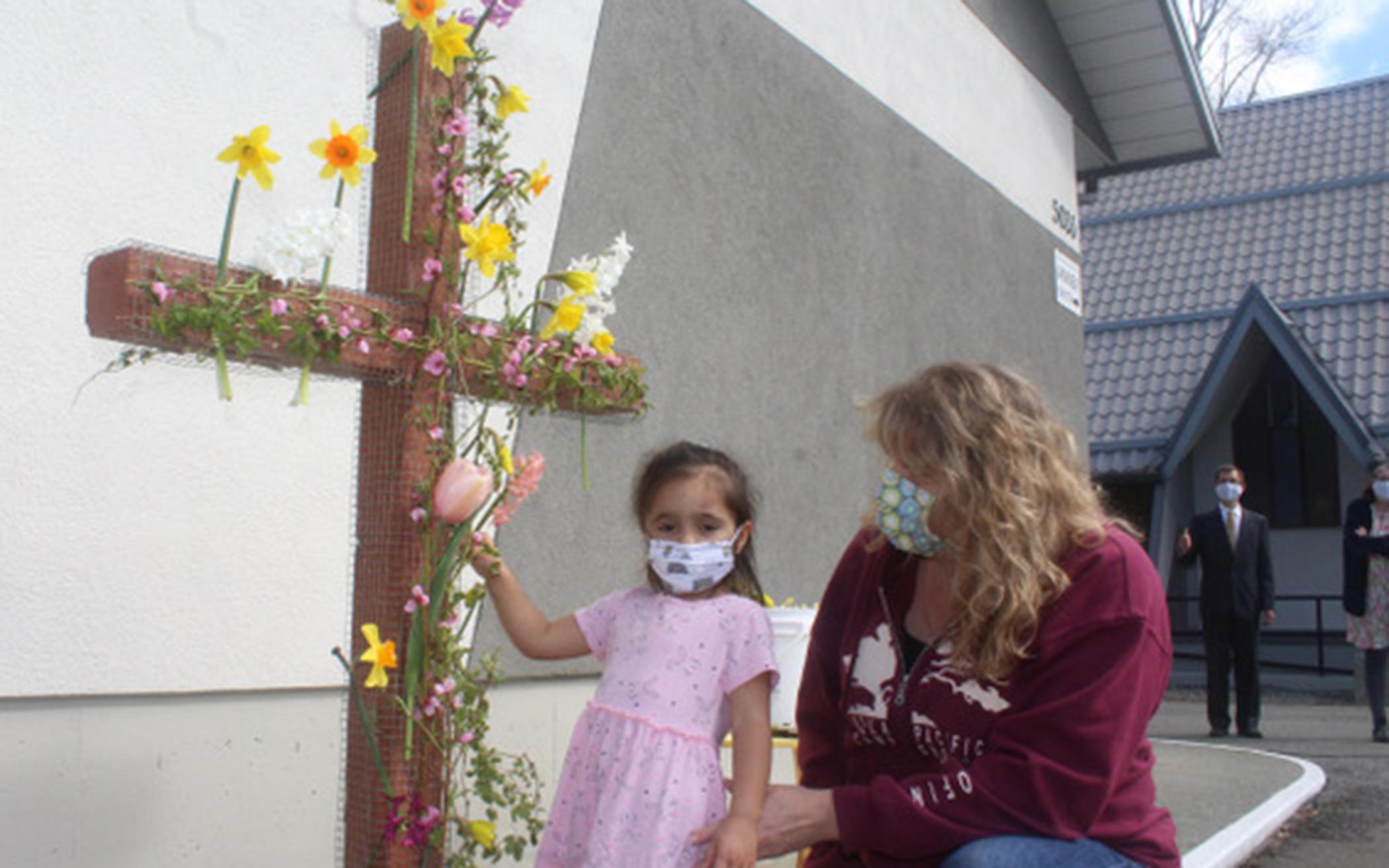The resurrection of Jesus Christ was celebrated in many different ways this year as Christian Reformed congregations in communities across North America adapted Easter services, for the second year in a row, to comply with locally mandated restrictions due to the coronavirus pandemic. Here are three The Banner heard about.
Alberni Valley CRC, Vancouver Island, B.C.
Curtis Korver is pastor of Alberni Valley CRC. “Shortly before Easter,” Korver explained, “we were quite thrilled that although the province had closed places of worship, a temporary six-week variance was issued to allow limited attendance for Good Friday, Easter, Passover, Easter, and Eid or other religious events within that period. Then COVID(-19 case) numbers increased, and the variance was taken away. So our worship service was online only.”
Alberni Valley CRC has grown to love the “Flowering of the Cross,” a liturgy they found in Reformed Worship magazine (Lift High the Cross: An Easter morning celebration, December 2000). The symbolism of the cross—the place of death—becoming the beginning of life, symbolized by the placing of flowers on the cross, has become an Easter tradition. While flowers are brought forward, the congregation sings ‘Christ the Lord Is Risen Today!’
This year, due to the pandemic restrictions, the placing of the flowers became a “drive-thru” event. “When we finished (worshiping) online,” said Korver, “couples, individuals and families came to the parking lot over the course of about half an hour. With masks on, each person inserted a flower into the mesh (on the cross).”
Alberni Valley News, the local newspaper, ran a story, “Churches celebrate Easter despite closed doors,” including photos of the flower-covered cross. “We were quite happy to see,” said Korver, “even in a small way, the news of Easter proclaimed in the newspaper. Being a small-town paper, it stopped short of ‘every knee bowing and every tongue confessing,’ but we know that good news rang out.”
LaGrave CRC, Grand Rapids, Mich.
LaGrave CRC’s website says it has 1,800 members, but state regulations at the time of Easter permitted a significantly reduced number of people, 300, to attend a worship service. Solution? “We had two separate services,” said LaGrave’s pastor, Peter Jonker, “where we allowed up to 300 people in each service. Congregants had to wear masks at all times, and we were allowed to sing with the masks (on). We had two trumpeters, though they were well back behind the pulpit, and the bells of their trumpets were masked. It was amazing to begin the service singing ‘Christ the Lord is Risen Today’ with people in the pews and the trumpets blowing a descant on the last verse.” LaGrave also livestreamed its Easter service.
Alice Greidanus, member of LaGrave CRC, attended in person with friend Emily Brink who described their experience. “(We) attended in-person worship for the first time in a year. We wore masks and were ushered to a specific seat. … We could sing! With masks on, but it was wonderful! There was also a small masked quartet of excellent singers. Pastor Jonker invited the children to come forward to sit on carpet squares so they could be socially distanced. Afterwards, coffee was served outside by the parking lot for the first time. All in all, it was a joyful experience.”
West End CRC, Edmonton, Alta.
Increasing case numbers of COVID-19, and a growing number of those associated with more infectious variants of the virus, necessitated that in-person attendance for Easter worship services at Alberta churches remain limited to 15% of fire code occupancy. For West End CRC, while continuing to livestream the services, this meant only 120 people could be present in the sanctuary. Like LaGrave, the church decided to offer two services. “We cap the registrations at 110 in the event that we have visitors,” explained Michelle Rooker, the church’s chair of council. “I was thankful and happy to do the service twice,” said Pastor Henry Kranenburg. “In a time of so many restrictions and lack of connections as well as for such an important faith celebration, to have an opportunity for worship and gathering for as many as would be able and comfortable to be there,” was an important value for him and church staff, Kranenburg said.
Kranenburg was struck by the amount of positive feedback received for the service, both in terms of content and the appreciation for the opportunity to be there. “For some, who had not been in church for a long time, the simple fact of being in worship with other people—community—was especially what they had missed and what was good,” Kraneburg said.
About the Author
A former nurse and chaplain, Janet Greidanus is a freelance news correspondent and long-time writer of the In Memoriam column for The Banner.

